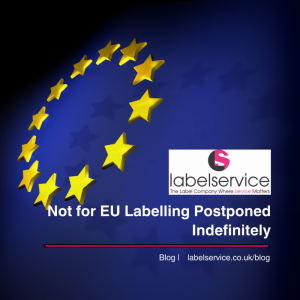A labelling mistake can be costly but it´s difficult to keep up with all of the regulations on your product. You must label spirit drinks correctly if you’re selling them in the UK. This includes other beverages and food that contain spirit drinks. Some of the rules differ between Great Britain (England, Scotland and Wales) and Northern Ireland.
A spirit drink is an alcoholic beverage that:
- is intended for human consumption
- is made from agricultural ingredients
- has a minimum alcohol strength of 15% – except for egg liqueur (advocaat) which has a minimum alcohol strength of 14%
The first thing to be sure of is the name of the spirit.
You must display the name under which the spirit is sold. There are differences in how the spirit name is displayed in Great Britain and Northern Ireland.
There are 47 categories of spirit drink in Great Britain and 44 in Northern Ireland. If your product does not fall into one of the categories, but still meets the definition of a spirit drink, you must display the term ‘spirit drink’. If your spirit drink meets the definition of more than one of these categories, you may sell it under one or more of the category names. The regulations for Northern Ireland changed in May 2021. For example, sweetening limits were added for some categories and a condition was included on using the term ‘single malt’ for whisky.
Displaying the spirit name in Great Britain
The spirit name is known as a sales denomination in Great Britain. If your product is in one of the Annex II to retained Regulation 110/2008 categories, the name of this category must be displayed on the labelling, packaging and any presentation of your product. For example, if what you are selling meets the definition of category ‘1. Rum’, the sales denomination is rum. You may supplement or replace the sales denomination of a spirit drink with a geographical indication (GI) registered in the UK GI register.
Displaying the spirit name in Northern Ireland
The spirit name is known as a legal name in Northern Ireland. The name you display on the drinks label, packaging and any presentation of the product must be the legal name, as found in the categories of Annex I to Regulation (EU) 2019/787. For example, if what you are selling meets the definition of category ‘1. Rum’, the legal name is rum. You may supplement or replace the legal name of a spirit drink with a geographical indication (GI) registered in the EU GI register.
Labelling compound terms
Compound terms are used to describe a spirit drink category or geographical indication (GI) with an addition of a foodstuff. The addition of the foodstuff means the spirit drink can no longer be defined as the specific category or GI it refers to. An example of this is ‘spiced rum’, as rum cannot be flavoured – as explained in its category definition.
It also applies when combining a spirit drink with the term ‘liqueur’ (a drink that meets the requirements of the liqueur category). A compound term cannot be used if a spirit drink has only been diluted with water, so that the alcoholic strength is below the minimum strength listed in the drink category.
To label an alcoholic beverage that is a compound term, you must:
- write out the compound term in letters of the same font, size and colour
- write it in the same or a smaller font size than the sales denomination or legal name
- not interrupt the compound term with any text or picture that is not part of it
The term ‘spirit drink’ must not be part of a compound term describing an alcoholic beverage.
Compound terms in Great Britain
All alcohol content must come from the spirit drink used in the compound term. You must not add additional alcohol to the drink. The term ‘liqueur’ must not be part of a compound term describing an alcoholic beverage in the categories 33 to 40 of Annex II to retained Regulation 110/2008. The sales denomination cannot be replaced by a compound term.
Compound terms in Northern Ireland
All alcohol content must come from the spirit drink used in the compound term. The beverage can include alcohol that is in flavourings, colours or other authorised ingredients. The terms ‘alcohol’, ‘spirit’, ‘drink’, and ‘water’ must not be part of a compound term describing an alcoholic beverage.
The legal name can be replaced by a compound term that includes the term ‘liqueur’ or ‘cream’ if it complies with the liqueur category (for example, gin liqueur). If the alcoholic beverage is a spirit drink, the compound term must be accompanied by the legal name of the spirit drink. This must appear in the same visual field as the compound term, unless the legal name is replaced by a compound term that includes the words ‘liqueur’ or ‘cream’.
Labelling allusions
An allusion is a reference to the name of a spirit drink category or GI that has been added as an ingredient to another foodstuff or drink, for example, ‘beer with tequila’. It does not include a reference to that drink or GI in a compound term or the list of ingredients. All additional alcohol content must come from the spirit in the allusion name.
Allusions in Great Britain
Allusions to a spirit drink can be used in alcoholic beverages and foodstuffs. All additional alcohol content must come from the spirit in the allusion name. To label an allusion for foodstuffs, you must place the allusion on a different line to the sales denomination. To label an allusion for alcoholic beverages, you must write the allusion in a smaller font than the sales denomination and any compound term.
Allusions in Northern Ireland
Different rules apply to foodstuffs, alcoholic beverages other than spirit drinks, spirit drinks listed in categories 33 to 40 and spirit drinks not listed in those categories. For spirit drinks that are not listed in categories 33 to 40, there are only 2 circumstances where you can allude to another spirit drink:
- where the alluded to spirit drink has been used as the sole alcoholic base to produce the spirit drink
- where a cask has been used to store the spirit drink that was previously used to mature the alluded to spirit drink
Foodstuffs (Northern Ireland)
Foodstuffs can have more than one spirit drink allusion. The alcohol content must come from the spirit drink alluded to. The product can also include alcohol that is in flavourings, colours or other authorised ingredients.
Alcoholic beverages, other than spirit drinks (Northern Ireland)
Alcoholic beverages can have more than one spirit drink allusion. All additional alcohol content must come from the spirit drink alluded to.
You must:
- place the allusion on a different line to the name of the alcoholic beverage
- write the allusion in font size that is no larger than half the font size used for the name of the drink
- name each alcoholic ingredient in the drink at least once in the same visual field as the allusion in descending order of the quantities used
If a compound term is used, write the allusion in a font size no larger than half the size of the font size used for the compound term.
Spirit drinks listed in categories 33 to 40 (Northern Ireland)
These drinks can have more than one spirit drink allusion. All additional alcohol content must come from the spirit drinks alluded to.
You must:
- place the allusion on a different line to the legal name of the drink
- write the allusion in font size that is no larger than half the font size used for the legal name of the drink
- accompany the allusion with the legal name of the drink, ensuring that the legal name is in the same visual field as the allusion
- name each alcoholic ingredient at least once in the same visual field as the allusion in descending order of quantities used
If a compound term is used, write the allusion in a font size no larger than half the size of the font size used for the compound term. These drinks cannot use the name ‘cream’ in the legal name of the drink or in the spirit drink name alluded to.
Spirit drinks with allusions as a sole alcoholic base (Northern Ireland)
The rules in this section do not apply to spirit drinks listed in categories 33 to 40. You can use an allusion to a spirit drink if it is the sole alcoholic base used to produce a spirit drink that falls within a category of spirit drink in Annex I to Regulation (EU) 2019/787. It must:
- not have been combined with any foodstuffs other than the foodstuffs used to produce the alluded to spirit drink or the production of the spirit drink on which the allusion is being used
- not have been diluted by water so that its alcoholic strength is below the minimum strength for that spirit drink
To label allusions for these drinks you must:
- place the allusion on a different line to the legal name of the drink
- write the allusion in font size that is no larger than half the font size used for the legal name of the drink
- accompany the allusion with the legal name of the drink, ensuring that the legal name is in the same visual field as the allusion
If a compound term is used, write the allusion in a font size no larger than half the size of the font size used for the compound term.
Low and non-alcoholic beverages
Rules for compound terms and allusions allow the use of a spirit drink name in a low alcohol beverage if all the alcohol content originates from the spirit referred to. For example, a ‘low alcohol gin and tonic’ when all the alcohol comes from gin.
It is not possible to have a ‘non-alcoholic’ or ‘zero alcohol’ gin and tonic because there is no alcohol present. You cannot label an ‘alcohol free’ or ‘low alcohol’ beverage against a spirit drink name, for example ‘alcohol free rum’ or ‘low alcohol gin’. This is because it would not:
- be a compound term or allusion
- meet the spirit drink category definition including a minimum percentage of alcohol by volume
You cannot use category names in the description, presentation and labelling of these products, for example, ‘gin alternative’. This includes on websites and marketing descriptions.
In Summary
If Labelservice can help you with your alcohol labels then please get in touch.

















